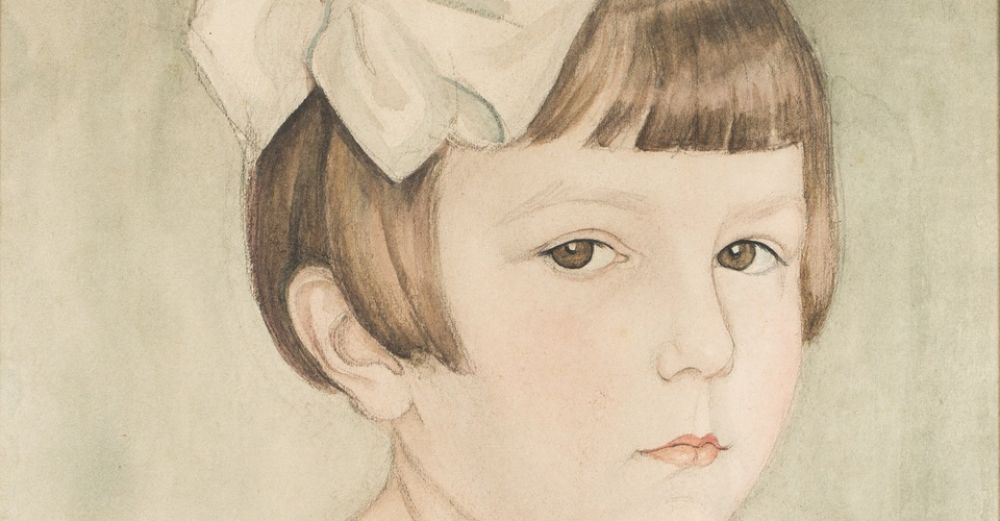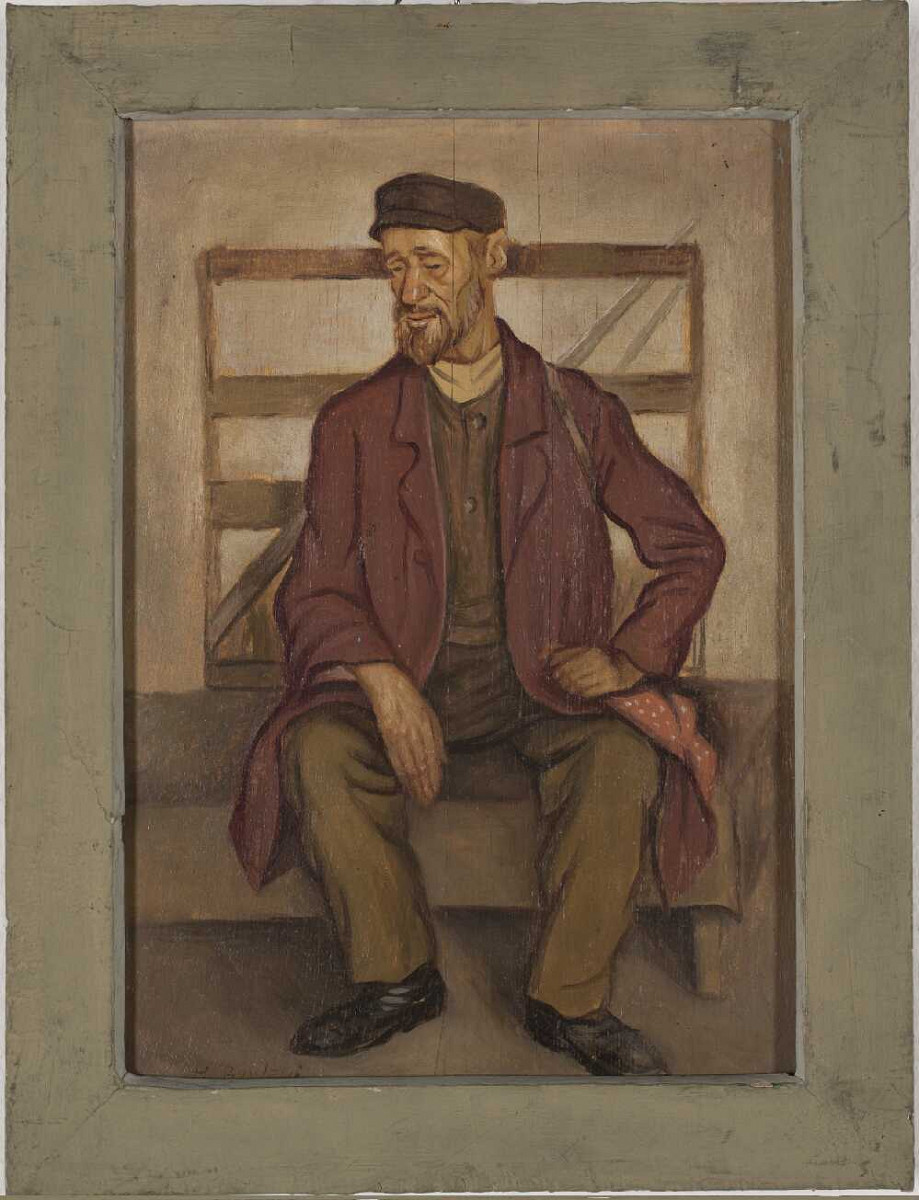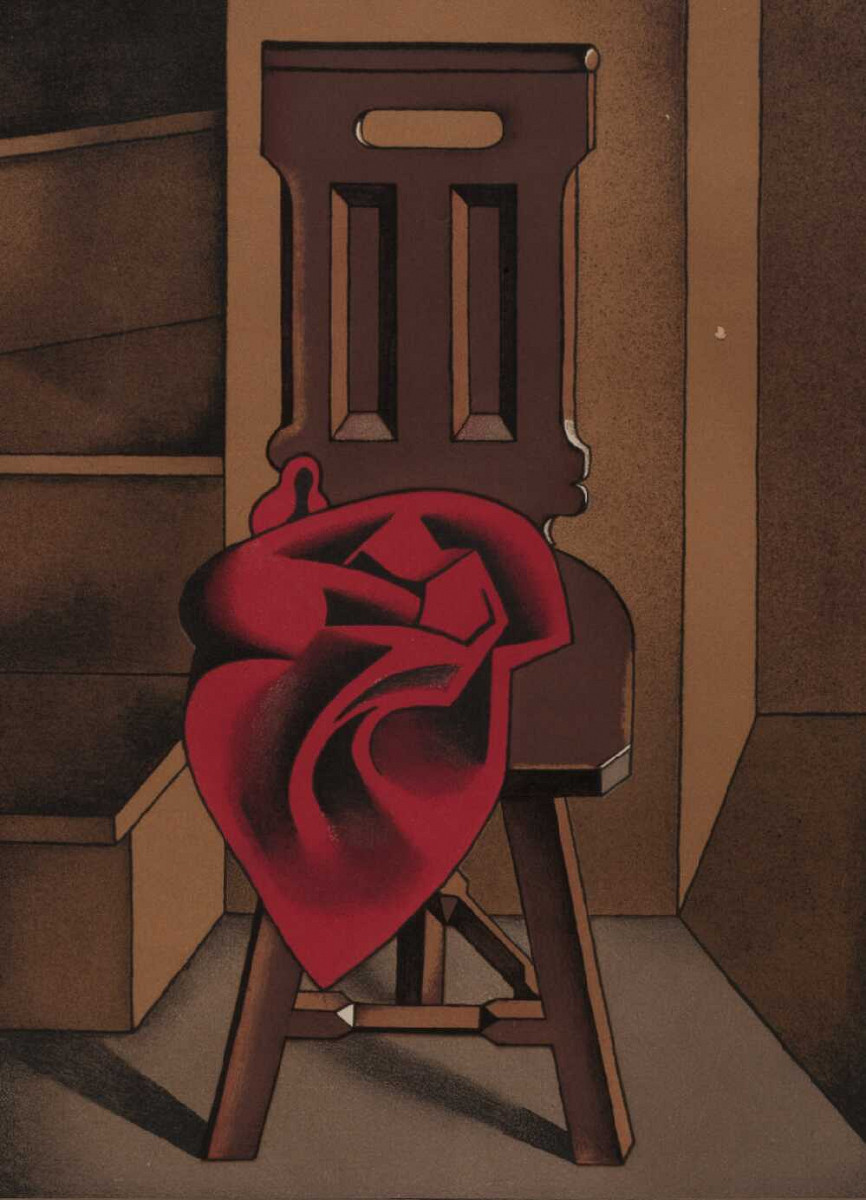- News
- Events
- Oneg Shabbat
- Collections
- Research
- Exhibitions
- Education
- Publishing Department
- Genealogy
- About the Institute
- Bookstore


Portrait of Zofia Flisówna / i
The collections of the Jewish Historical Institute include works from different periods of creative output of Berlewi. Among the most prominent works there are, for sure, watercolor portrait of Zofia Flisówna and a small oil painting „Szklarz” [Glazier], both from the interwar period.
In the 1950s Berlewi gave Jozef Sandlow (the first head of the Museum of the Jewish Historical Institute) a 1950 lithograph „Krzesło z czerwona materia” [Chair with red matter”, which enriched the collections of the Institute. Just recently two pencil drawings from the 1920s (male nude and a man’s head) have been brought from London and donated to the JHI by Tony Kahane.
Henryk Berlewi was born in Warsaw in 1894 to a Jewish family. As a teenager he studied Fine Arts in Warsaw, Antwerp and Paris. After his return to Poland in 1913, for more than ten years, he was active in the Jewish and Polish artistic circles. He was the first in Poland graphic artist of Jewish descent who saw the need for creating a national style, and thereby engaging in rapid changes in European art after the First World War.
His stay in Paris resulted in his fascination by cubism. However, the continuation of studies in Warsaw, for some time, perpetuated realistic tendencies in his art. Berlewi’s early works are far from new artistic trends — both those inspired by Jewish folklore, and portraits.
However, Berlewi had not avoided the main currents of art for a long time. Since 1918 he had been interested in Expressionism and Futurism. He also took up Jewish subjects, worked with art group Lodz JUNG Yiddish, which was bringing together young Jewish artists (including Jankiel Adler, Wincenty Brauner). The group’s main aim was the creation of Jewish art (it was not about the presentation of national subjects, but about the invention of the national form). Through its national identity it was to enter European culture.

Early twenties were the most important period in terms of artistic activity of Berlewi. From expressionism he got to abstract, after several years of reducing his naturalistic subjects to simple geometric forms. The impetus for this was the Russian Constructivism and Suprematism. A decisive role had his friendship with El Lissitzky, who would talk him round to Suprematism. Berlewi faced the dilemma of whether his art should be Jewish and national or cosmopolitan and universal.
At that time, he was still painting realistic portraits such as the aforementioned image of Zofia Flisówna (pencil, watercolor) from the collections of the Jewish Historical Institute. Gentle colors, accurate drawing make it difficult to imagine a better portrait of a child. At the time also „Szklarz” was created, depicting a Jewish worker of glazier profession xwho is resting during a break at work.
In 1922, Berlewi moved to Berlin and developed his own theory of abstract art — mechanofacture, which rejected in painting the illusion of space in order to emphasize the two-dimensionality of canvas. He replaced the texture of painting’s composition with visual equivalents: rhythmization of lines and planes, and a schematic combination of simple geometric shapes. He had transformed the structure of materials into a system of halftones consisting of circles, dots, straight and wavy lines and square planes. He dramatically reduced the colors to black, white and red. As a result, a self-contained texture, independent of materials and fully reflecting the nature of painting was created. In his manifesto, he wrote that the mechanization of the means of expression does not mean automation of the creative process. The new language of geometric forms was to harmonize with the accelerated rhythm of changing present day, to give expression to the unification of art and the life of society postulated by constructivists.
In 1924, Berlewi announced his artistic theory in the brochure „Mechano-Faktura” and in the pages of the Berlin magazine „Der Sturm”, and the exhibition of the artist’s works which took place in Der Sturm gallery became the embodiment of his theoretical considerations. In Warsaw, Berlewi founded Biuro Reklama-Mechano [Mechano Advertising Bureau], through which he promoted the principle of functional printing (eg, ad design of chocolate Plutos, 1925). Together with architect Szymon Syrkus he executed projects of advertising kiosks; he also took up stage design. Berlewi represented the most radical current of Polish avant-garde of the twenties. He was a member of the „Blok” Group of Cubists, Constructivists and Suprematists, active in 1924–1926.

Shortly afterwards, in 1928, he settled in Paris, devoting himself to portraiture; he quit the avant-garde aesthetics. He also painted realistic nudes, with clear outlines and value modeling of models’s complexions. He created abstract backgrounds with free strokes of brush, applying patches of pure colors. Static pose of the figures referred to the traditional, classical conventions of presenting nudes.
To the principles of mechanofacture Berlewi returned in 1957 and re-entered the world of abstract art. The artist is considered to be the precursor of Op-art. The verticals and horizontals of linear halftones, circle and their sectors, rectangles and squares form perfectly balanced compositions in his late paintings.
Although the collections of the Jewish Historical Institute contain only a few works of Henryk Berlewi, they are all outstanding ones, deserving the interest of researchers and the general public, giving an idea of the diversity of his work and artistic pursuits.